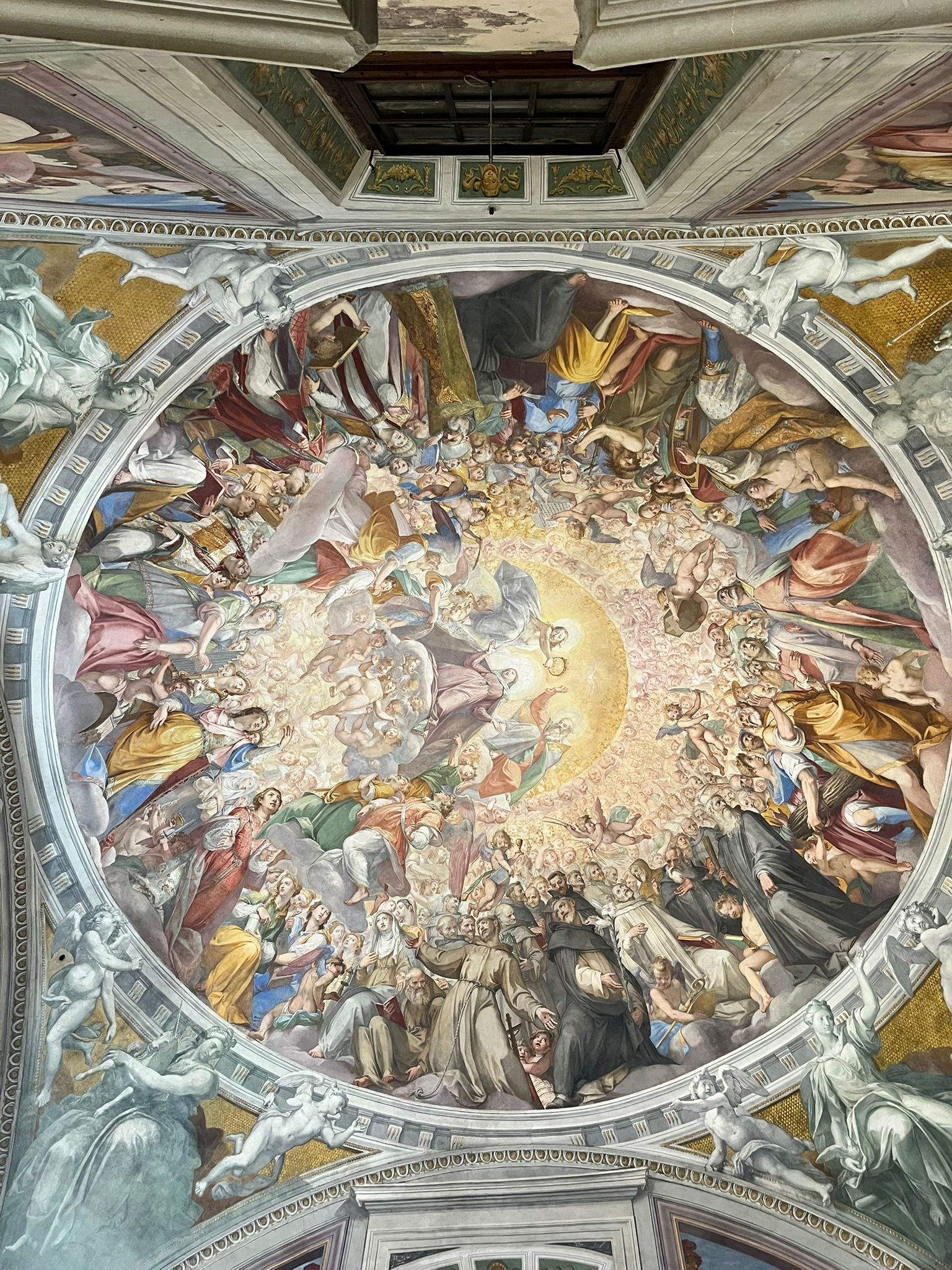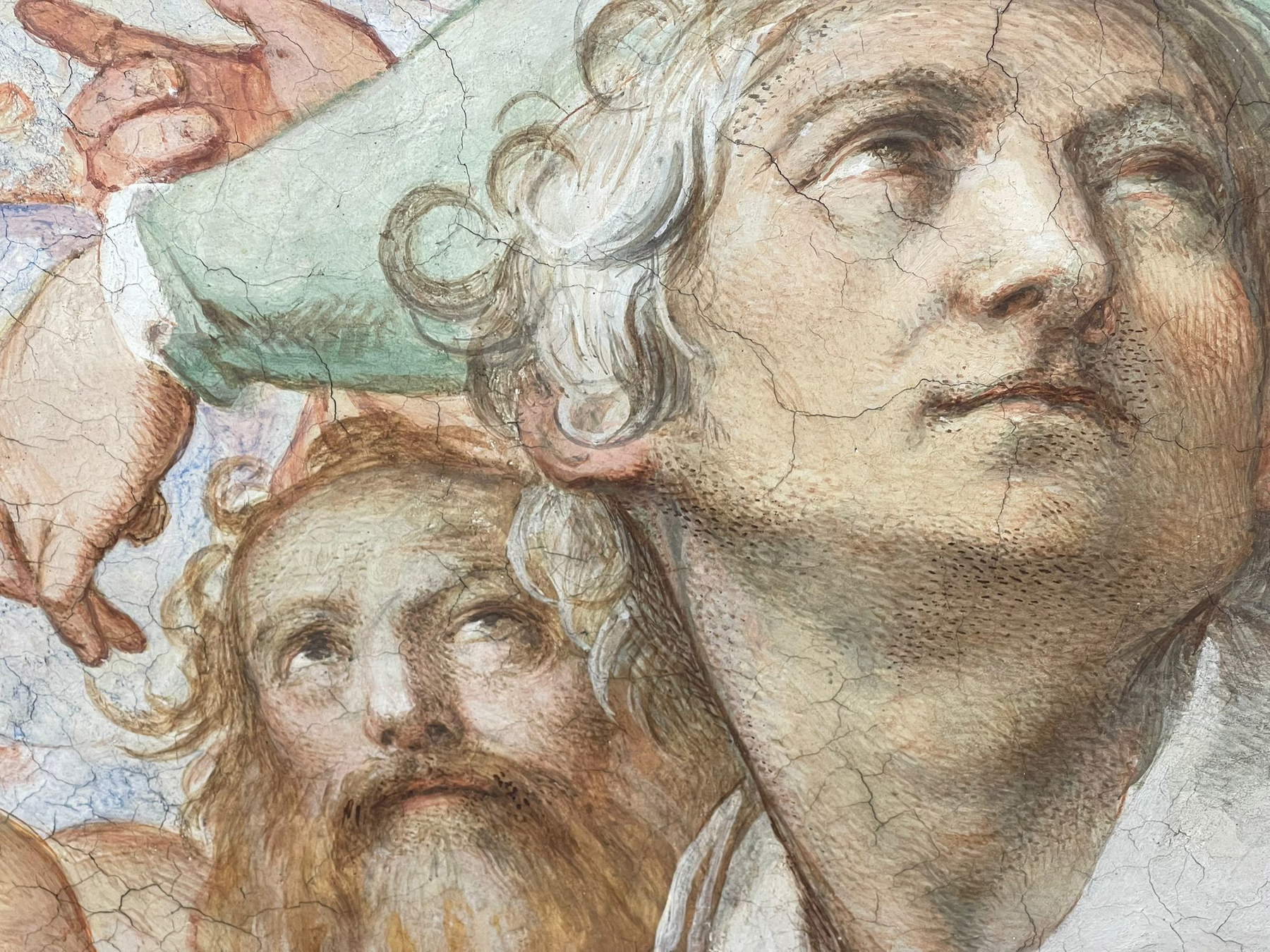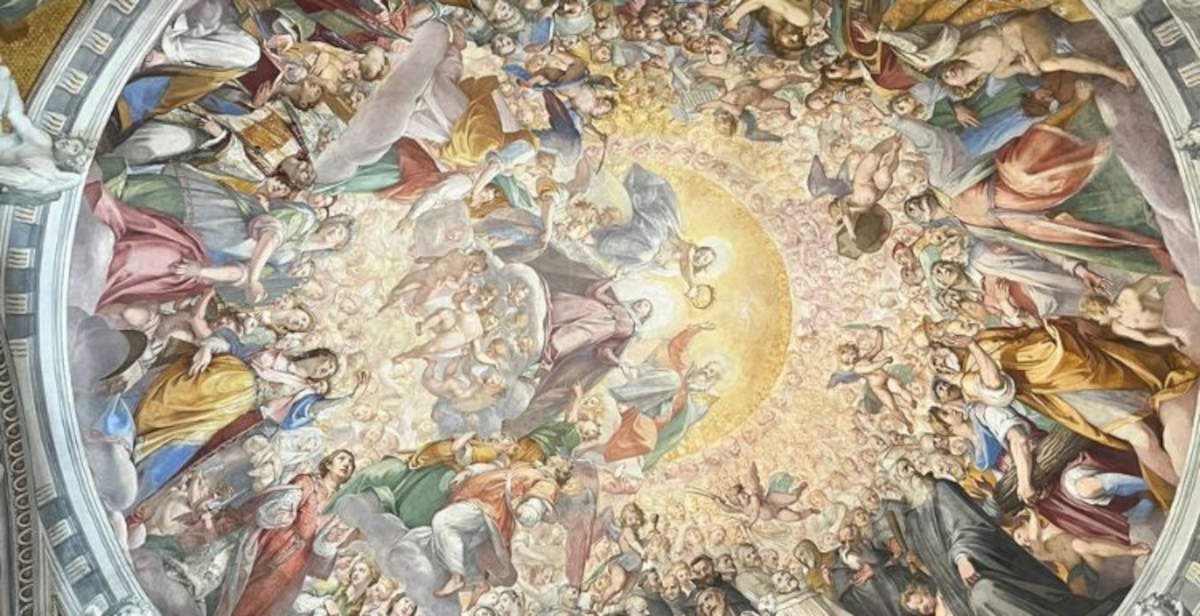After months of work, restoration work has been completed on the Del Giglio-Neri Chapel, a historically and artistically significant environment located in the Santa Maria Maddalena de’ Pazzi complex in the center of Borgo Pinti in Restored the Del Giglio-Neri Chapel in the church of Santa Maria Maddalena de’ Pazzi in Florence. The project, led by the Soprintendenza Archeologia, Belle Arti e Paesaggio for the metropolitan city of Florence and the provinces of Pistoia and Prato, was fully funded by the Ministry of Culture. The chapel, which is located immediately to the right of the main entrance to the complex, now returns accessible to the public in its original configuration, as desired by the last patronal family, the Neri.
The official return to the city took place on Tuesday, July 1, at 6 p.m., in the presence of representatives of the Superintendency, clergy and the contractor. The intervention concerned in particular the interior decorative apparatus, bringing to light the frescoes executed by Bernardino Poccetti, born Bernardo Barbatelli, an artist active between the late 16th and early 17th centuries, who was in charge of the decoration of the chapel starting in 1598. The pictorial cycle is divided into three main nuclei: theCoronation of Mary, the stories of St. Bernard of Clairvaux, founder of the Cistercian order, and those of Philip Neri, depicted even before his canonization in 1622.

The altarpiece, depicting Saints Achilleo and Nereo, by Domenico Cresti known as il Passignano, occupies the space formerly intended for a work by Cosimo Rosselli, later transferred to the church. Other images related to the two titular saints also appear on the walls of the scarsella. The highlight of the figurative project, and of the entire decorative scheme, is found in the dome, where Bernardino Poccetti depicted a lively scene of the Coronation of Mary surrounded by a multitude of jubilant saints.
The architectural complex of the church of Santa Maria Maddalena de’ Pazzi, to which the Del Giglio-Neri Chapel belongs, was designed by Giuliano da Sangallo in the last decades of the 15th century. Characterized by a quadriporticus preceding the entrance to the church, it represents one of the most important places of worship in the Renaissance city. Today the property is in the hands of the FEC - Fondo Edifici di Culto del Ministero dell’Interno, while the officiating is entrusted to the Congregation of the Augustinian Fathers of the Assumption, who are permanently present in the complex.
During the extraordinary openings organized in recent months, during the restoration phase, it was possible for the public to access the construction site and take a closer look at the frescoes and recovery operations. Such visits presented a novel perspective on the structure and its decorative elements. In addition, starting July 12, and with a further schedule planned for September, new guided tours will be organized by the Superintendency staff in collaboration with the company performing the work, Techne Srl.

The restitution ceremony was attended by architect Antonella Ranaldi, ABAP Superintendent for Florence, Pistoia and Prato, Father Giuliano Riccadonna, Rector of the Assumptionist Augustinians, and the owners of the Techne company, Isabella Gubbini and Marco Marchetti, who were responsible for carrying out the work. Also present were Superintendence officials involved in the different phases of the construction site.
The work will be the subject of a monographic study with historical, technical and iconographic insights, published within the series Tutela e Restauro, the newsletter edited by the Florentine Superintendency and intended to document the conservation and enhancement activities of the heritage. This is also intended to offer a scientific contribution to the knowledge of the chapel and its role within the entire architectural complex, as well as an opportunity to retrace the historical stages of artistic commissioning by the Neri family. The intervention has thus restored legibility and coherence to a complex decorative cycle, elaborated at a moment of transition between the Counter-Reformation and the incipient Baroque, in which the devotional and celebratory needs of the patronal family found a point of balance in the intense pictorial narrative desired by Poccetti.
 |
| Florence, restored the Del Giglio-Neri Chapel in the church of Santa Maria Maddalena de' Pazzi |
Warning: the translation into English of the original Italian article was created using automatic tools. We undertake to review all articles, but we do not guarantee the total absence of inaccuracies in the translation due to the program. You can find the original by clicking on the ITA button. If you find any mistake,please contact us.